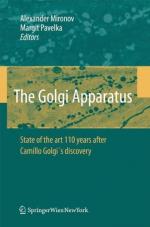|
This section contains 1,707 words (approx. 6 pages at 300 words per page) |

|
World of Anatomy and Physiology on Camillo Golgi
Camillo Golgi, a clinician, researcher, and teacher, is best known for his Nobel Prize-winning work on the central nervous system, including his development of the chromate of silver method for better defining cell structures and his discovery of a small organ within the cytoplasm of the nerve cell now known as Golgi's apparatus. After the parasite responsible for malaria was identified in 1880, Golgi's study and subsequent diagnosis methodology made it possible to determine the different forms of malaria and means by which to treat patients. Golgi was born in Corteno (renamed Corteno Golgi in his honor), Brescia, Italy. Following in the footsteps of his father, Alessandro, a medical practitioner in the village of Cava-Maria, Golgi attended the University of Pavia as a medical student. There he studied under Eusebio Oehl, distinguished as the first scientist in Pavia to make a systematic study of cell structures using the microscope...
|
This section contains 1,707 words (approx. 6 pages at 300 words per page) |

|


